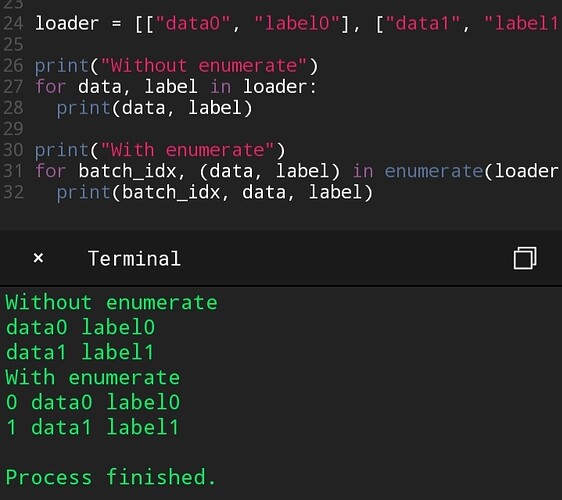Hi everyone second post here!
I got this error
TypeError: linear(): argument 'input' (position 1) must be Tensor, not int
This is my code - it runs pretty slow
import torch
import torch.nn as nn
import torchvision
import torchvision.transforms as transforms
from torch.utils.data import DataLoader
import numpy as np
from PIL import Image
import time
start = time.time()
transform = transforms.Compose([transforms.Resize(255), transforms.CenterCrop(224), transforms.ToTensor(),])
# This gives us some transforms to apply later on
training = torchvision.datasets.ImageFolder(root = "training_set", transform = transform)
print(training)
train_dataloader = DataLoader(dataset = training, shuffle = True, batch_size = 32)
print(train_dataloader)
print("Before NN creation",start-time.time())
# Creating the model
class NeuralNetwork (nn.Module):
def __init__(self):
super(NeuralNetwork, self).__init__()
self.Linear_Stack = nn.Sequential(
nn.Linear(224*224, 40000),
nn.ReLU(),
nn.Linear(40000, 10000),
nn.ReLU(),
nn.Linear(10000, 75),
nn.ReLU(),
nn.Linear(75, 5),
nn.ReLU(),
nn.Linear(5, 1),
nn.LogSoftmax(dim=1)
)
def forward (self, x):
logits = self.Linear_Stack(x)
return logits
model = NeuralNetwork()
print(model)
epochs = 2
lr = 0.001
loss = nn.CrossEntropyLoss()
optim = torch.optim.SGD(model.parameters(), lr = lr)
print(loss, optim)
#creating the main loop
def main(loader, model, loss, optim):
size = len(loader.dataset)
for (images, labels) in enumerate(loader):
# Prediction
pred = model.forward(images)
loss = loss(pred, target)
#backprop
optim.zero_grad()
loss.backward()
optim.step()
print(loss)
for x in range(epochs):
main(train_dataloader, model, loss, optim)
print(start-time.time())
I guess main question is: Am I using Image Folder correctly? (I know it works because I get the correct amount of datapoints when I print it) Is my code even succinct and I couldn’t find anything on what the variable names for the outputs are (like X, y or Sample, Target). I think that answering these questions will help me solve my question, reply if you have anything else that you think will be helpful and I will take it onboard.

